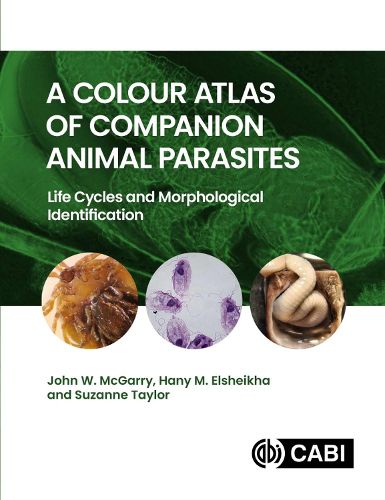Readings Newsletter
Become a Readings Member to make your shopping experience even easier.
Sign in or sign up for free!
You’re not far away from qualifying for FREE standard shipping within Australia
You’ve qualified for FREE standard shipping within Australia
The cart is loading…






A Colour Atlas of Companion Animal Parasites: Life Cycles and Morphological Identification illustrates how to identify common parasites of dogs, cats and horses using simple morphological features. It presents parasite life cycles in straightforward, accurate terms, and covers: - the general features of major arthropods, helminths and protozoa of dogs, cats and horses; - morphological identification of both adult parasites and their immature stages in tissues, with particular consideration given to differential identification; - major parasites of companion animals which may shift regions because of climate change, animal movement and other anthropogenic factors. Parasite identification is fundamental, not only for planning treatment, prevention and management of parasitic disease, but also for surveillance of invasive exotic parasites and for monitoring the spread of endemic species. With 600 parasite specimens photographed and annotated as a quick reference resource, this book mirrors what a practitioner might view down a microscope, bringing the subject alive. It forms a complete and practical resource for all veterinary students, veterinarians, and anyone interested in parasite control.
$9.00 standard shipping within Australia
FREE standard shipping within Australia for orders over $100.00
Express & International shipping calculated at checkout
A Colour Atlas of Companion Animal Parasites: Life Cycles and Morphological Identification illustrates how to identify common parasites of dogs, cats and horses using simple morphological features. It presents parasite life cycles in straightforward, accurate terms, and covers: - the general features of major arthropods, helminths and protozoa of dogs, cats and horses; - morphological identification of both adult parasites and their immature stages in tissues, with particular consideration given to differential identification; - major parasites of companion animals which may shift regions because of climate change, animal movement and other anthropogenic factors. Parasite identification is fundamental, not only for planning treatment, prevention and management of parasitic disease, but also for surveillance of invasive exotic parasites and for monitoring the spread of endemic species. With 600 parasite specimens photographed and annotated as a quick reference resource, this book mirrors what a practitioner might view down a microscope, bringing the subject alive. It forms a complete and practical resource for all veterinary students, veterinarians, and anyone interested in parasite control.